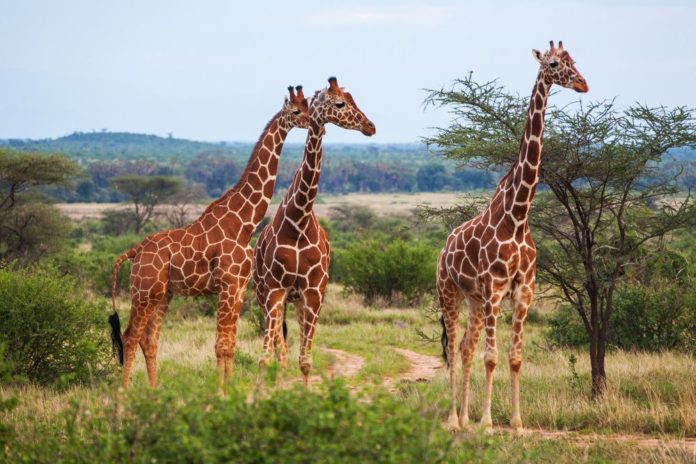A new genetic analysis of giraffes, an animal once thought to represent a single species called Giraffa camelopardalis, has revealed that the genus Giraffa actually contains at least four distinct species. The findings, published Thursday in Current Biology, come as the very meaning of the word “species” has been up for debate — and the results could have big impacts on conservation efforts.
But hey, you might say (if you know a lot about giraffes), these three “new” species already existed. The southern giraffe, Masai giraffe and reticulated giraffe aren’t exactly new populations. Until now, however, they were classified as “subspecies” of the northern giraffe, Giraffa camelopardalis.
The classic definition of a species is a group of animals that can reproduce with one another and whose offspring are fertile. But as scientists got better at studying the genes and behaviors of different animal groups, they found a need for one more official taxonomic distinction: the subspecies. Animals within a species, but of different subspecies, can reproduce from a purely genetic standpoint. But they generally don’t, usually because of long-term geographic separation. They’ve ceased to breed with one another for long enough that the estrangement shows in their genes, making them distinct from one another.
So why the sudden change for giraffes from sub to species? Until recently, giraffe division has been largely based on more superficial characteristics, such as coat patterns. From a research standpoint, the giraffe – which has suffered a 40 percent drop in population over the past 15 years — has been quite neglected.
“Only 400 scientific papers have been written about giraffes, versus 20,000 papers on white rhinos,” study author Axel Janke, an evolutionary biologist at the Senckenberg Biodiversity and Climate Research Center in Germany, told National Geographic. “Despite its size, the giraffe has been completely overlooked.”
This isn’t the first time that scientists have suggested that the giraffe – which has nine subspecies, including the ones that may now be promoted to species – contains multitudes, and this study might not prove to be the final word on the subject. But after studying nearly 200 DNA samples, the researchers believe they’ve shown that the four distinct groups last shared a common ancestor some 1.5 million to 2 million years ago.
That’s at least a few hundred thousand years before polar bears diverged from brown bears. These two bear “species” have now created hybrids in the wild, calling their classification into question. But the genetic record of giraffes seems to show that their “species” have stayed away from one another since that ancient divergence.
“We’ve clearly completely forgotten what a giraffe is,” Janke told the BBC.
When one species becomes four, conservationists have to take notice. The study came to be because scientists wanted to make sure they weren’t unknowingly obliterating any unique species: If conservationists tried to repopulate an area where giraffes had hit hard times by shipping in cousins from another region, they might unknowingly create hybridized species, thereby losing the original lineage they were trying to save. Or the newly intermingled cousins might not be able to reproduce if their DNA had diverged enough.
The division of the giraffe population into distinct species may also call into question the animal’s current status with the International Union for Conservation of Nature (IUCN), which lists giraffes as a species of “least concern.”
“As an example, northern giraffe number less than 4,750 individuals in the wild, and reticulated giraffe number less than 8,700 individuals – as distinct species, it makes them some of the most endangered large mammals in the world,” study author Julian Fennessy of Giraffe Conservation Foundation in Namibia said in a statement.
“With now four distinct species, the conservation status of each of these can be better defined and in turn added to the IUCN Red List,” he said. It’s possible that some or all of these species will now officially be considered endangered.
“Working collaboratively with African governments, the continued support of the Giraffe Conservation Foundation and partners can highlight the importance of each of these dwindling species,” Fennessy said, “and hopefully kick start targeted conservation efforts and internal donor support for their increased protection.”






